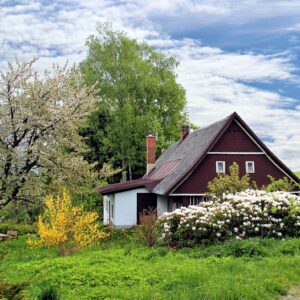Whether you are a beginning gardener or a seasoned professional, there are many cheap Gardening Methods that you can use to grow your favorite vegetables and fruits. From Back to Eden gardening to composting, there are many inexpensive gardening tips that you can use.
Hydroponics
Using hydroponics to grow your own food can save you money on groceries. This method of growing food eliminates soil-borne diseases, weeds, and predators that can destroy your garden.
In addition to saving money on groceries, hydroponics can also save you time. You can grow your own fruits, vegetables, and herbs in less than a month.
Hydroponics also provides you with greater control over your nutrients. You can control the temperature of your nutrient solution, which helps to ensure that your plants are getting the nutrients they need to grow. You can also change the pH level to make your plant’s roots more receptive to nutrients. You can also control the amount of nutrients you add to your hydroponic solution.
Hydroponics systems vary depending on the type of plant you’re growing. Some systems are very simple and require no pumps or mechanical parts. Others are more complex and require electricity.
Hydroponics allows you to harvest multiple times during the growing season. This means that you can grow your own fruits and vegetables without using as much water as you would with traditional agriculture. In addition to saving money, hydroponics also provides your plants with a better environment. It’s also easier to diagnose problems with hydroponics.
Hydroponic systems can be used in both urban and rural settings. For the best results, your hydroponic system should be located in a location where your plants can get at least six hours of sunlight a day.
If you’re interested in hydroponic gardening, start by growing plants that you love. Then, research the types of plants that grow best in your area. If you’re interested in learning more, visit a Community-Supported Agriculture program for advice.
In-ground Gardening
Whether you’re growing a vegetable garden on a budget or you’re just starting to garden, there are many different methods to choose from. For example, you might choose to plant your crop directly in the ground, or you might opt to grow in a raised bed. However, no matter which method you decide to go with, there are some things you should consider.
The first thing you should do is figure out how much space you have to work with. This will allow you to determine the size of your vegetable garden. For instance, if you only have a small balcony, a potted vegetable garden may be all you need. If you have more space, you can expand to a full-sized in-ground vegetable garden.
Next, you should determine what kind of soil you want to grow your crop on. Most edible plants need frequent watering, so it’s best to choose a good quality soil.
You may also wish to consider soil amendments to improve the quality of your soil. These amendments may include a composted mulch, which will improve the soil’s structure and moisture retention. You might also want to consider adding drainage materials. These materials will help water drain away from your crop more quickly, which is important for plants with shallow root systems.
The best way to know which type of soil you’re dealing with is to conduct a soil test. In most cases, you’ll need to break up the top layer of soil to determine the composition of your garden’s soil.
You can also conduct a percolation test to see if your soil is well-drained. This test can be done by digging a hole in the ground and filling it with water. The resulting drainage test will show if your soil is well-drained or if you need to improve your drainage.
Back to Eden Gardening
Creating a Back to Eden garden isn’t a difficult task, but it does require a few key materials. Unlike traditional gardening, this technique relies on mulch to protect the soil’s surface. In addition, it uses a layer of organic fertilizer to enhance the soil’s moisture levels and promote growth.
The main benefit of the Back to Eden gardening method is that it doesn’t require the use of commercial fertilizer. Instead, the method relies on the natural growth of plants to produce a fertilizer. This is also one of the reasons why this method works well in drought-prone areas.
The back to Eden method requires three primary materials: wood chips, newspaper, and compost. Wood chips are ideal for Back to Eden gardening because they provide a layer of protection to the soil’s surface. They also help bind up nitrogen as they decompose. The wood chips should be no larger than three-inch chunks.
The back to Eden method also works well on large landscapes. However, it’s not the easiest to execute on a large scale. You may have to deal with weeds and dry soil. You may also run into problems with the type of wood chips you use. The wrong type of wood can disrupt the microbiome of your soil.
For optimal results, the Back to Eden garden should be started in the fall. Depending on your climate, you may not need additional water or fertilizer for a few months.
The back to Eden method also takes care of the old-fashioned task of weeding. It doesn’t kill weed seeds, but it does prevent them from growing.
The Back to Eden gardening method is also great for drought-prone areas. The mulching technique is a good way to keep moisture in the soil and prevent mud splash back.
Lasagna Gardening
Basically, lasagna gardening methods involve a layering of organic material that breaks down and provides fertilizer to plants. The material can be anything that would go into a compost bin. This makes it easy to reuse, and requires less work than a traditional garden. It also reduces the need for pesticides and fertilizers. It also deters weeds.
Lasagna gardening is a great way to produce vegetables at home. You can use your own yard waste or purchase materials from local sources. You may also be able to source materials from your local extension office.
Start by defining the area in your garden that you’d like to use for a lasagna garden. Use twine or rope to mark the boundaries. Then, create a raised bed, which can be made out of wood, metal roofing, or even fence boards. You can even use stones or other materials to create the border.
Next, make a thick layer of topsoil in the bed. This should be about as thick as you would like the bed to be. If your soil is very sandy, you may need to add a few bags of compost. It may be available at home improvement stores, and it can also be purchased in bulk.
After you’ve created the bed, start adding layers. Use organic materials that are either carbon or nitrogen rich. You can use compost, fallen leaves, animal manure, and even kitchen scraps. The ratio should be about two browns to one green.
You can also layer weed-free straw over the lasagna garden. This will keep weeds at bay, and conserve water. Alternatively, you can spread the straw over the bed and let it break down into organic matter for the plants.
Composting
Whether you are trying to reduce your garden’s waste or simply want to feed your plants, composting is an inexpensive way to achieve your goal. The process turns food scraps into “black gold” that adds nutrients to the soil. You can create compost using many common household items such as coffee grounds, banana peels, grass clippings and more.
The process of composting is naturally occurring and occurs over time. All organic material contains nitrogen. These nutrients are vital to the growth of plants and animals.
Composting is a biological process that takes place naturally and is not complicated to learn. The process involves layering materials to create a compost pile. These materials should be alternating layers of greens and browns.
As you begin to add organic material, it is important to bind soil particles together. This improves aeration and water infiltration. It also reduces crusting on the surface of the soil.
Depending on your climate, you should choose a shady spot for your compost pile. Avoid placing compost under eaves or in areas with poor drainage.
It is also important to use a “turning tumbler” for your compost pile. This is a sealed container that is mounted on an axle with a handle. This will speed up the composting process by aerating the materials. This type of composter is available at most gardening stores and online.
When using this method, you should be sure to turn the pile on a regular basis. A good rule of thumb is to not pile materials higher than finger size. This will prevent the pile from being too tight and will result in a soggy mess.
You can also use a “dig and drop” method, which involves burying the waste as you accumulate it. This avoids the introduction of harmful bacteria to your plants.





